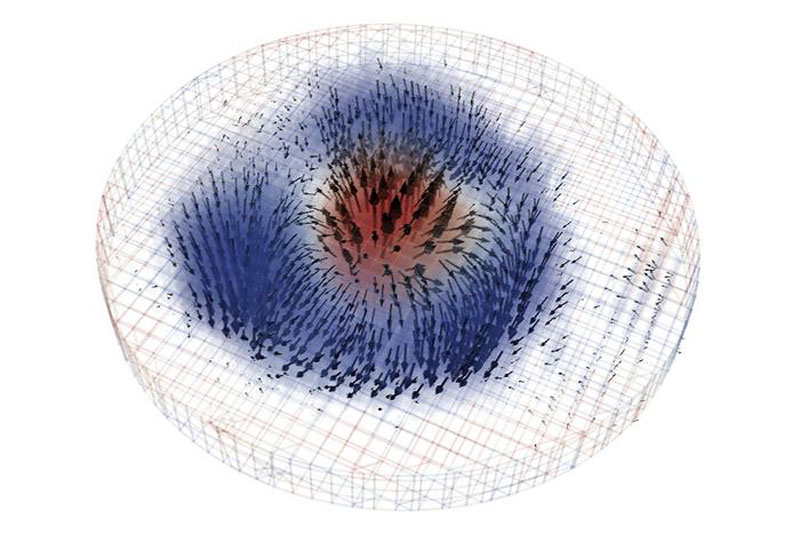Scientists from the National Laboratory named after. Lawrence Berkeley National Laboratory has for the first time obtained a three-dimensional image of a skyrmion, a nano-sized magnetic vortex. It is such a stable structure that it can serve as a memory and logic element in conventional and quantum computing. The spin nature of the skyrmion implies extremely low energy consumption and high reliability – all this can lead to a breakthrough in storage and calculation systems.

Image source: Lawrence Berkeley National Laboratory
Traditionally, a magnetic skyrmion was considered as a two-dimensional object. However, in real conditions, the material in which skyrmions appear has a certain physical volume into which skyrmions “launch” their “magnetic tentacles” and also acquire volume. In this volume, the structure of skyrmions cannot be considered homogeneous. Their spin structure undergoes changes: from an upward orientation strictly in the center to an orientation strictly downward at the edges. This gives skyrmions certain properties that must be taken into account. But first, all this needs to be seen and measured.
«Our results provide a basis for nanoscale metrology for spintronics devices,” said Peter Fischer, senior scientist at the National Laboratory. Lawrence Berkeley University at the US Department of Energy, who led the research.
To study skyrmions, scientists were provided with a sample by Western Digital, which is interesting in itself. This is a multilayer material made of iridium/cobalt/platinum films with a width of 800 nm and a thickness of 95 nm. The sample was examined using soft X-rays using magnetic X-ray laminography in Switzerland.
With X-ray laminography, “you can basically reconfigure [the skyrmion] based on a lot of images and data,” the authors explained. This process took months and ultimately led to a better understanding of the spin structures of skyrmions. Fully understanding the 3D spin texture of skyrmions “opens up opportunities to study and tailor 3D topological spintronic devices with advanced functionality that cannot be achieved in two dimensions.”